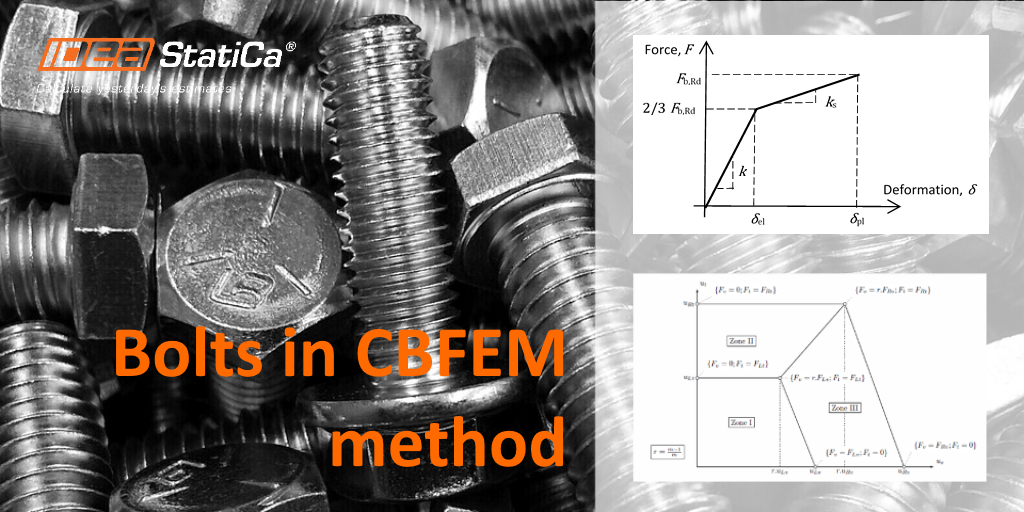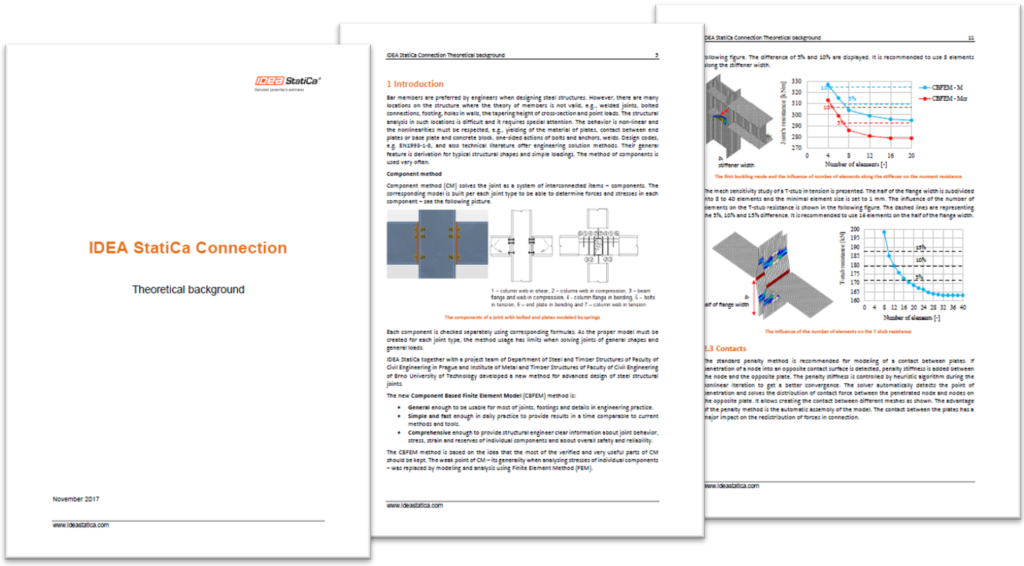In the Component Based Finite Element Method (CBFEM), bolt with its behavior in tension, shear and bearing is the component described by the dependent nonlinear springs. The bolt in tension is described by spring with its axial initial stiffness, design resistance, initialization of yielding and deformation capacity. The axial initial stiffness is derived analytically in the guideline VDI2230.
Only the compression force is transferred from the bolt shank to the plate in the bolt hole. It is modeled by interpolation links between the shank nodes and holes edge nodes. The deformation stiffness of the shell element modeling the plates distributes the forces between the bolts and simulates the adequate bearing of the plate. Bolt holes are considered as standard (default) or slotted (can be set in plate editor). Bolts in standard holes can transfer shear force in all directions, bolts in slotted holes have one direction excluded and can move in this selected direction freely. Interaction of the axial and the shear force can be introduced directly in the analysis model. Distribution of forces reflects the reality better (see enclosed diagram). Bolts with a high tensile force take less shear force and vice versa.
You can read more about the bolts or the CBFEM method in our document.
In de op componenten gebaseerde eindige-elementenmethode (CBFEM) is de bout met zijn gedrag op trek, afschuiving enstuik het onderdeel dat wordt beschreven door afhankelijke niet-lineaire veren. De bout op trek wordt beschreven door een veer met zijn axiale initiële stijfheid, ontwerpweerstand, initialisatie van falen en vervormingscapaciteit. De axiale initiële stijfheid wordt analytisch afgeleid in de richtlijn VDI2230.
De drukkracht wordt overgebracht van de boutschacht naar de plaat in het boutgat. Dit wordt gemodelleerd door interpolatieverbindingen tussen de schacht EE-netknopen en EE-netknopen van het boutgat. De vervormingsstijfheid van het schaalelement dat de platen modelleert, verdeelt de krachten tussen de bouten en simuleert een adequate afdracht van de plaat. Boutgaten worden beschouwd als standaard (standaard) of slobgaten (dit kan worden ingesteld in de plaateditor). Bouten in standaardgaten kunnen schuifkracht in alle richtingen overbrengen, bouten in slobgaten hebben één richting uitgesloten en kunnen vrij in deze geselecteerde richting bewegen. Interactie van de axiale en de dwarskracht kan direct in het analysemodel worden ingevoerd. Krachtverdeling geeft de werkelijkheid beter weer (zie bijgevoegd schema). Bouten met een hoge trekkracht nemen minder afschuifkracht op en vice versa.
Meer over de bouten of de CBFEM-methode leest u in de Theoretische achtergrond.




